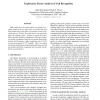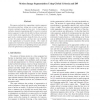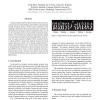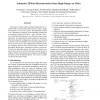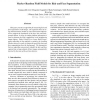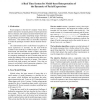106
click to vote
FGR
2008
IEEE
2008
IEEE
Bilinear elastically deformable models with application to 3D face and facial expression recognition
15 years 7 months ago
In this paper, we explore bilinear and elastically deformable models for addressing jointly 3-dimensional face and facial expression recognition. An elastically deformable model i...
FGR
2008
IEEE
15 years 7 months ago
2008
IEEE
A close relationship exists between the advancement of face recognition algorithms and the availability of face databases varying factors that affect facial appearance in a contro...
101
click to vote
FGR
2008
IEEE
15 years 7 months ago
2008
IEEE
Many studies have now shown that it is possible to recognize people by the way they walk. As yet there has been little formal study of the effects of covariates on the recognition...
112
click to vote
FGR
2008
IEEE
15 years 7 months ago
2008
IEEE
We propose methods for segmenting a motion sequence into motion primitives, taking into account temporal constraints (continuity along the time axis). In the proposed methods, dyn...
114
click to vote
FGR
2008
IEEE
15 years 7 months ago
2008
IEEE
This paper presents a spatiotemporal pyramid representation for recognizing facial expressions and hand gestures. This approach works by partitioning video sequence into increasin...
101
click to vote
FGR
2008
IEEE
15 years 7 months ago
2008
IEEE
Temporal segmentation of human motion into actions is a crucial step for understanding and building computational models of human motion. Several issues contribute to the challeng...
FGR
2008
IEEE
15 years 7 months ago
2008
IEEE
To provide intelligent services in a smart environments it is necessary to acquire information about the room, the people in it and their interactions. This includes, for example,...
112
Voted
FGR
2008
IEEE
15 years 7 months ago
2008
IEEE
This paper presents a fully automated algorithm for reconstructing a textured 3D model of a face from a single photograph or a raw video stream. The algorithm is based on a combin...
110
Voted
FGR
2008
IEEE
15 years 7 months ago
2008
IEEE
This paper presents an algorithm for measuring hair and face appearance in 2D images. Our approach starts by using learned mixture models of color and location information to sugg...
FGR
2008
IEEE
15 years 7 months ago
2008
IEEE

